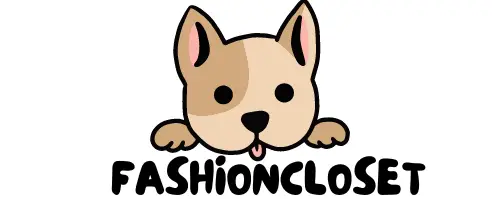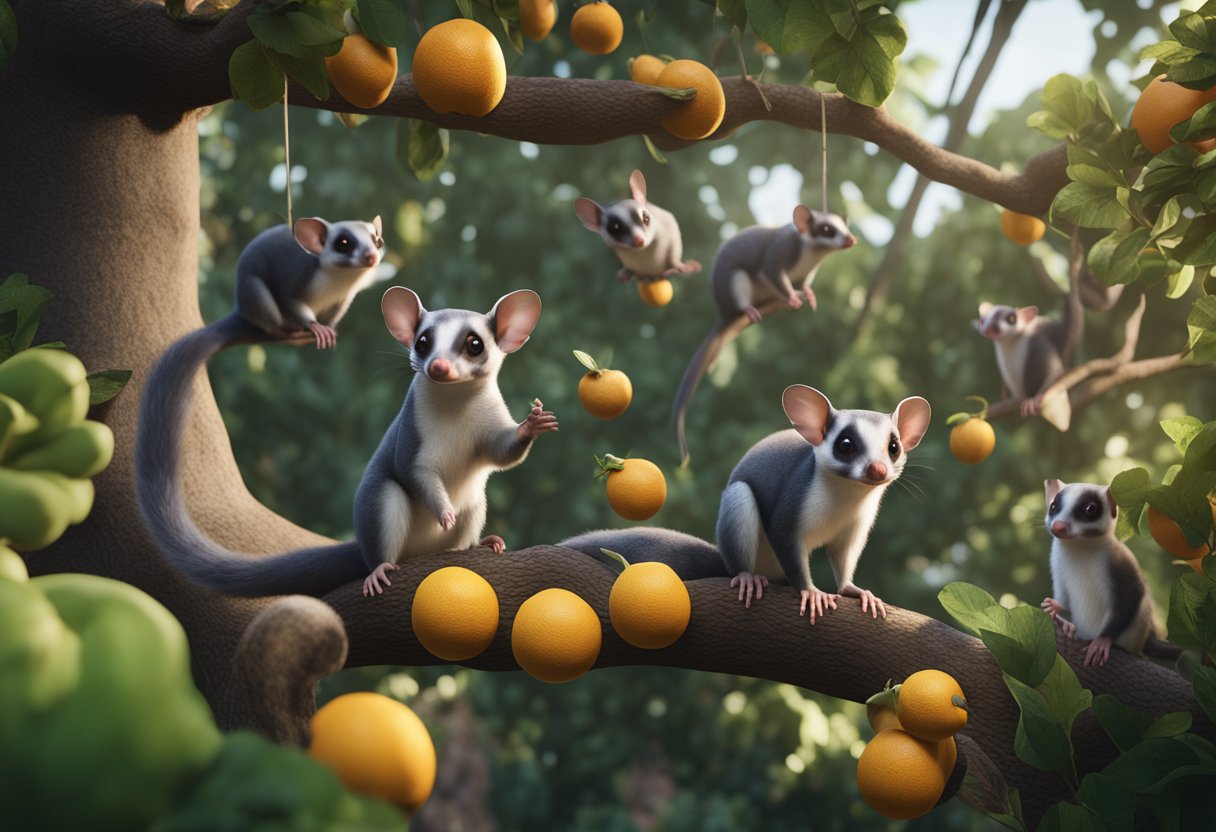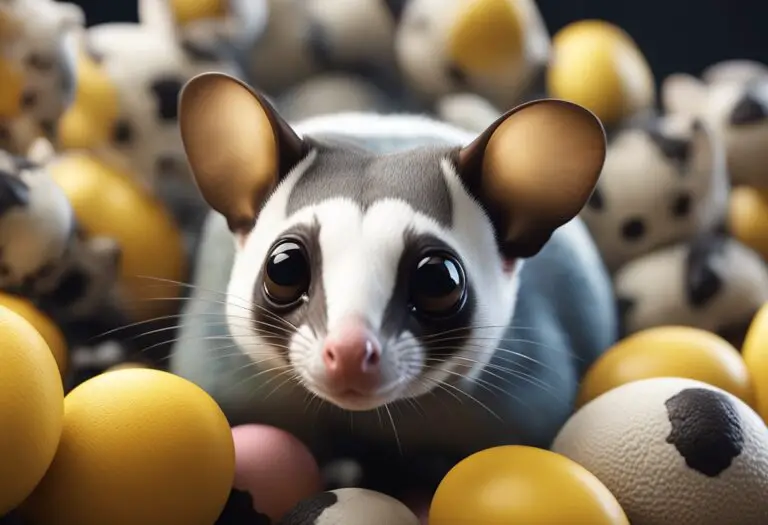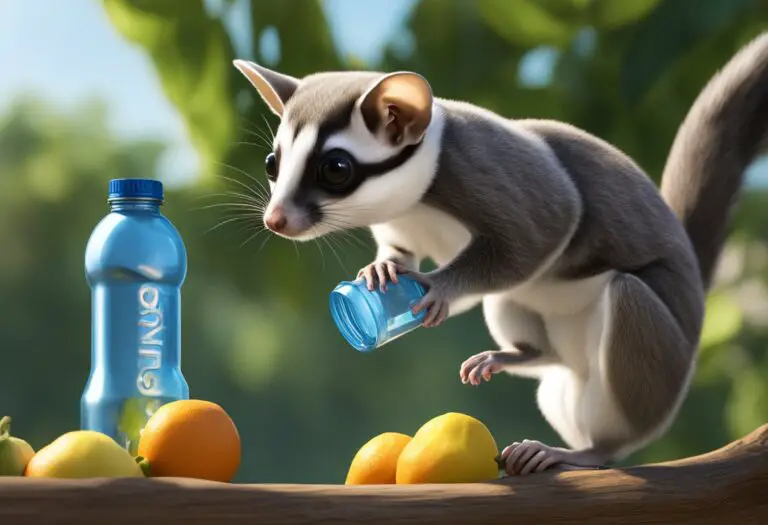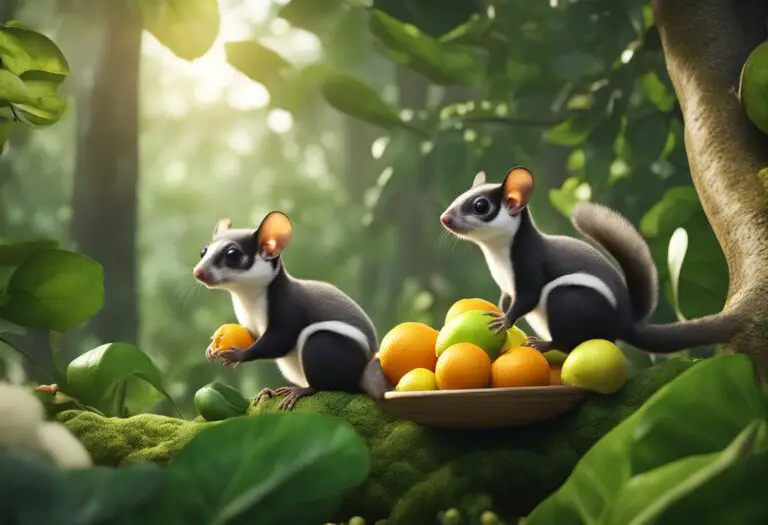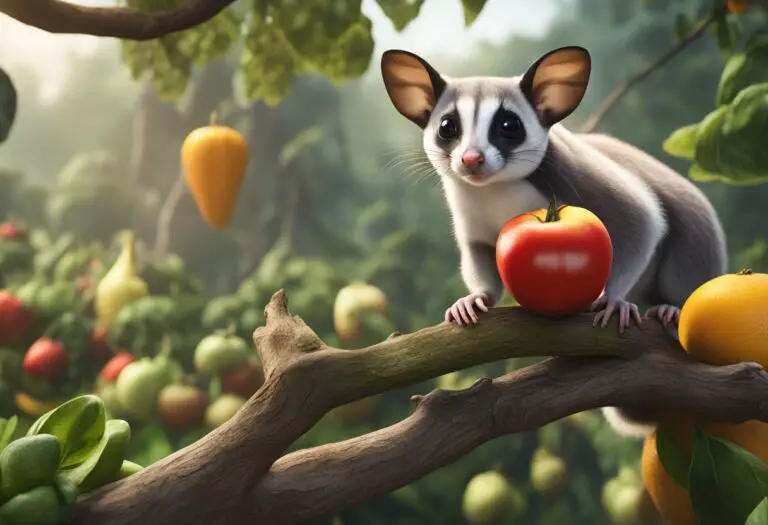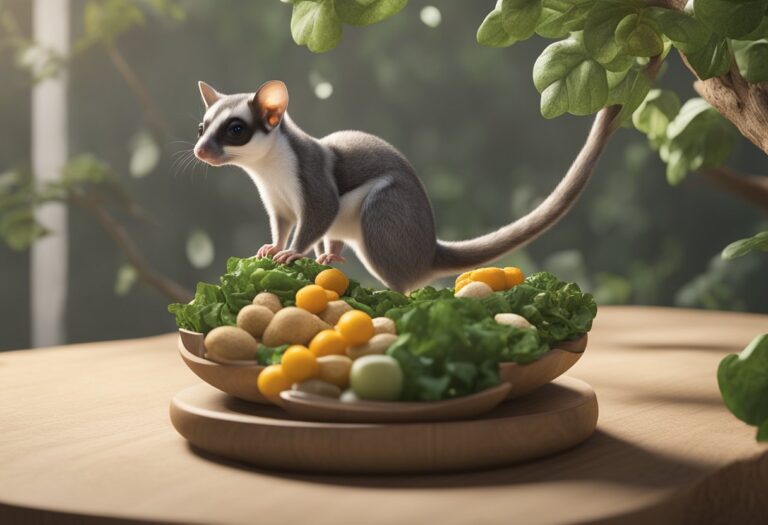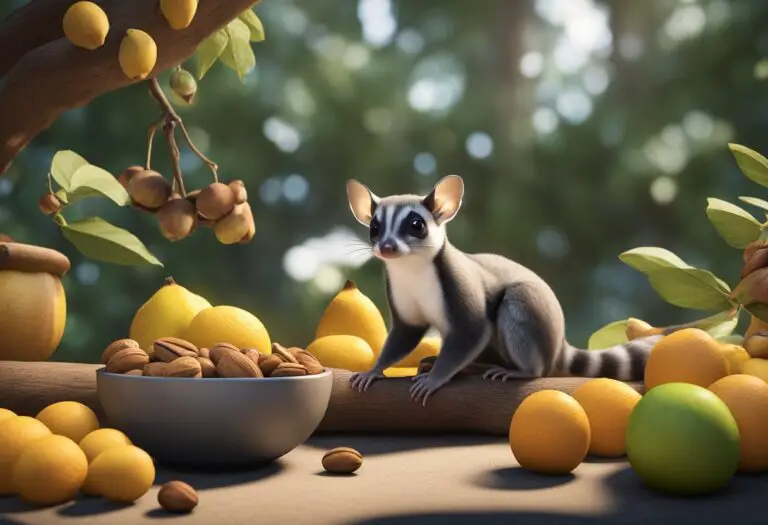Sugar Gliders Feeding Schedule
As a devoted pet owner, you want to provide the best possible care for your furry, winged companion. Sugar gliders, those enchanting marsupial creatures, hold a special place in many hearts, captivating us with their endearing personalities and unique needs. Ensuring their health and well-being starts with understanding the intricacies of their feeding schedule – a crucial aspect of proper sugar glider care.
Navigating the world of exotic pet nutrition can seem daunting, but fear not. This comprehensive guide will shed light on the essential components of a sugar glider’s feeding routine, equipping you with the knowledge to maintain their optimal health and happiness. From the types of foods they require to the frequency of meals, we’ll explore the nuances of a sugar glider’s dietary needs, empowering you to create a tailored plan that caters to their individual preferences and thriving.
Understanding Sugar Gliders’ Dietary Needs
Sugar gliders are omnivorous creatures, meaning they require a varied diet that includes both plant-based and animal-based foods. Their diet in the wild consists of a range of nectar, pollen, fruits, insects, and small vertebrates. Providing a balanced diet that mimics their natural feeding habits is essential for maintaining their overall health and well-being as exotic pets.
Omnivorous Nature of Sugar Gliders
As sugar gliders are omnivorous, they need a diverse array of nutrients to support their active lifestyles and unique physiological needs. Their diet should include a combination of proteins, carbohydrates, fats, vitamins, and minerals to ensure they receive the necessary nutrition for optimal health and well-being.
Importance of a Balanced Diet
A well-rounded sugar glider diet that closely resembles their natural feeding habits is crucial for maintaining their exotic pet nutrition and proper sugar glider care. By providing a diverse array of foods, owners can ensure that sugar gliders receive all the essential nutrients they need to thrive, supporting their active lifestyles and maintaining their health.
Setting Up a Feeding Routine
Establishing a consistent feeding routine is crucial for the health and well-being of sugar gliders. These active and curious creatures thrive on predictability, and a regular feeding schedule can help reduce stress and promote a harmonious relationship between the pet and its caretaker. It is recommended to provide sugar gliders with at least two meals per day, typically in the morning and evening, to mimic their natural foraging patterns. Maintaining a consistent feeding schedule for sugar gliders not only ensures that they receive their necessary nutrients but also helps them develop a sense of security and trust within their environment.
Establishing a Consistent Schedule
Providing sugar gliders with a predictable exotic pet feeding routines helps to reduce stress and promote a positive relationship between the pet and its caretaker. Owners should strive to feed their sugar gliders at the same time each day, typically around 7-9 AM for the morning meal and 6-8 PM for the evening meal. This consistent proper sugar glider care allows sugar gliders to anticipate and adjust to their feeding schedule, supporting their overall health and well-being.
Staple Foods for Sugar Gliders
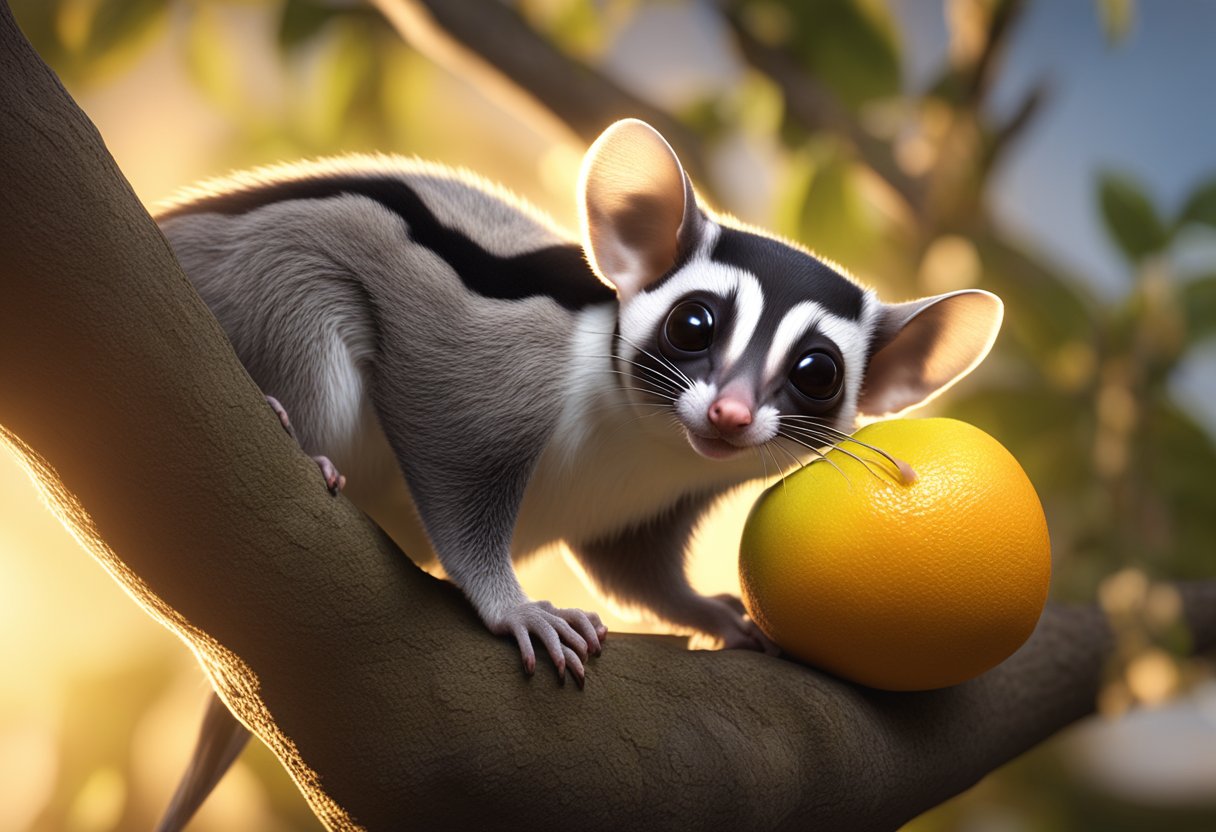
Sugar gliders’ diet should consist of a variety of high-quality, nutrient-dense foods to meet their diverse nutritional requirements. Their dietary needs include a balance of protein, carbohydrates, vitamins, and minerals to support their overall health and well-being as exotic pets.
High-Protein Options
Staple protein sources for sugar gliders can include cooked, unseasoned meats such as chicken, turkey, or low-fat ground beef. Hard-boiled eggs, low-fat cottage cheese, and commercial sugar glider pellets or powder supplements are also excellent sources of high-quality protein. These animal-based foods provide the essential amino acids necessary for muscle development, tissue repair, and other vital bodily functions.
Fruits and Vegetables
In addition to protein, sugar gliders also require a significant portion of their diet to be made up of fresh fruits and vegetables. Suitable options include a variety of berries, mangoes, papayas, sweet potatoes, carrots, and leafy greens. These plant-based foods supply sugar gliders with essential vitamins, minerals, and fiber, which support their overall health and well-being.
It is essential to provide a well-balanced and diverse selection of sugar glider diet options to ensure that these exotic pets receive all the necessary nutrients and food requirements to thrive.
Supplementing with Calcium and Vitamins
In addition to a balanced diet of proteins, fruits, and vegetables, sugar gliders also require calcium and vitamin supplementation to prevent nutritional deficiencies and support their overall health. Calcium is particularly important for maintaining strong bones and teeth, as well as supporting proper muscle function. Vitamin supplements, such as those formulated specifically for sugar gliders, can help ensure they receive adequate levels of essential vitamins, including vitamins A, B, C, and D. Proper supplementation can help prevent common health issues, such as metabolic bone disease, and promote the long-term well-being of sugar gliders.
| Supplement | Importance | Recommended Dosage |
|---|---|---|
| Calcium | Supports bone and tooth health, muscle function | 25-50 mg per kg of body weight per day |
| Vitamin A | Promotes vision, immune function, and skin health | 5,000-10,000 IU per kg of body weight per day |
| Vitamin B Complex | Supports energy metabolism, nervous system, and red blood cell production | Varies by specific B vitamin, follow manufacturer’s instructions |
| Vitamin C | Enhances immune function and collagen synthesis | 50-100 mg per kg of body weight per day |
| Vitamin D | Promotes calcium absorption and bone health | 200-400 IU per kg of body weight per day |
By incorporating calcium and vitamin supplements into the sugar glider’s diet, owners can help ensure their exotic pets receive the necessary nutrients to maintain sugar glider health and prevent common nutritional deficiencies. Regular veterinary check-ups and adjustments to the supplementation routine can further optimize the exotic pet nutrition for these unique marsupials.
Feeding Schedule for Sugar Gliders
Establishing a consistent feeding routine is essential for the health and well-being of sugar gliders. These active and curious creatures thrive on predictability, and a regular feeding schedule can help reduce stress and promote a harmonious relationship between the pet and its caretaker.
Morning Meal
The morning meal, typically served around 7-9 am, should consist of a protein-rich food, such as cooked unseasoned meat or hard-boiled eggs, along with a variety of fresh fruits and vegetables. This balanced meal provides the necessary nutrients to support the sugar gliders’ active lifestyles and their unique physiological needs.
Evening Meal
The evening meal, served around 6-8 pm, should follow a similar composition to the morning meal, ensuring that the sugar gliders receive a balanced and nutrient-dense diet throughout the day. This feeding routine mimics the natural foraging patterns of sugar gliders, providing them with the essential nutrients they require.
Snacks and Treats
In addition to the morning and evening meals, small, healthy snacks and treats can be offered throughout the day to provide enrichment and encourage natural foraging behaviors. It’s essential to monitor portion sizes and avoid overfeeding to maintain the sugar gliders’ optimal health and weight.
By following this comprehensive feeding schedule, you can ensure that your sugar gliders receive the proper feeding schedule for sugar gliders, sugar glider diet, and exotic pet feeding routines they need to thrive as beloved companions.
Fresh Water Availability
Alongside a balanced sugar glider diet, ensuring that these exotic pets have access to clean, fresh water at all times is crucial for their health and well-being. Sugar gliders require a consistent source of drinking water to stay hydrated and support various bodily functions. It is recommended to provide a water bottle or bowl that is easily accessible within their enclosure, and to frequently clean and refill the water source to maintain its cleanliness. Proper hydration not only supports the sugar gliders’ overall health but can also help prevent common issues, such as urinary tract infections or dehydration.
Providing Clean Water Sources
To ensure that sugar gliders receive the necessary hydration, it is important to provide them with a reliable and clean water source. This can be accomplished by using a water bottle or a shallow bowl that is securely placed within their enclosure. The water should be changed and the container cleaned regularly to maintain the water’s freshness and purity. By prioritizing access to clean drinking water, owners can contribute to the overall health and wellbeing of their sugar glider companions and support their exotic pet feeding routines.
Monitoring Sugar Gliders’ Feeding Habits
Closely monitoring a sugar glider’s feeding habits and overall health is essential for ensuring their well-being. Owners should be vigilant for signs of adequate nutrition, such as a shiny, healthy coat, bright eyes, and a consistent, active demeanor. Proper sugar glider care involves regularly observing the sugar gliders’ feeding behaviors and monitoring their physical condition to identify potential nutritional imbalances or other health issues early on.
Signs of Adequate Nutrition
Owners should look for indicators that their sugar gliders are receiving a balanced and nutritious diet. A shiny, healthy coat, bright eyes, and a consistent, active demeanor are all signs that the sugar gliders’ nutritional needs are being met. Maintaining sugar gliders’ health through proper care and monitoring their food requirements is crucial for their overall well-being.
Potential Health Concerns
Owners should be vigilant for any changes in a sugar glider’s appetite, weight fluctuations, or signs of lethargy or diarrhea, as these may indicate underlying health concerns that require prompt veterinary attention. Regularly observing the sugar gliders’ feeding behaviors and monitoring their physical condition can help identify potential issues early, allowing for timely intervention and proper adjustments to the feeding routine to ensure their optimal health and well-being.
Adjusting the Feeding Schedule
As sugar gliders progress through different life stages, their dietary needs may change, requiring adjustments to their feeding schedule. Younger sugar gliders, for example, may require more frequent meals and a higher caloric intake to support their rapid growth and development, while older individuals may need a slightly modified diet to maintain optimal health.
Accommodating Life Stages
Owners must closely monitor the sugar gliders’ responses to dietary changes and adapt the feeding routine accordingly to ensure their pets receive the appropriate nutrition at every stage of their lives. This may involve increasing the frequency of meals or adjusting the ratio of protein, fruits, and vegetables to cater to the specific needs of growing, adult, or senior sugar gliders.
Seasonal Variations
Additionally, seasonal variations in the sugar gliders’ natural environment can impact their nutritional requirements. During colder months, sugar gliders may have increased protein and calorie needs to support thermoregulation and energy expenditure. By closely observing the sugar gliders’ feeding behaviors and making necessary adjustments to their diet, owners can help maintain their pets’ health and well-being throughout the year.
Bonding Through Feeding Time
Feeding time can be an excellent opportunity to strengthen the bond between sugar gliders and their owners. By hand-feeding or offering treats, owners can create positive associations with their presence and reinforce the trust and comfort within the relationship. This interaction also allows for close observation of the sugar gliders’ feeding behaviors, which can provide valuable insights into their overall health and well-being.
Creating Positive Associations
Fostering a positive and rewarding feeding experience can contribute to the sugar gliders’ sense of security and contentment, ultimately leading to a more harmonious and enriching relationship between the pet and its caregiver. This approach not only supports proper sugar glider care but also helps maintain the sugar gliders’ health by ensuring they receive the necessary exotic pet feeding routines.
By consistently providing a nurturing and engaging feeding environment, owners can build a strong foundation of trust and affection with their sugar gliders. This, in turn, can facilitate other aspects of care, such as handling, veterinary visits, and overall sugar glider well-being.
